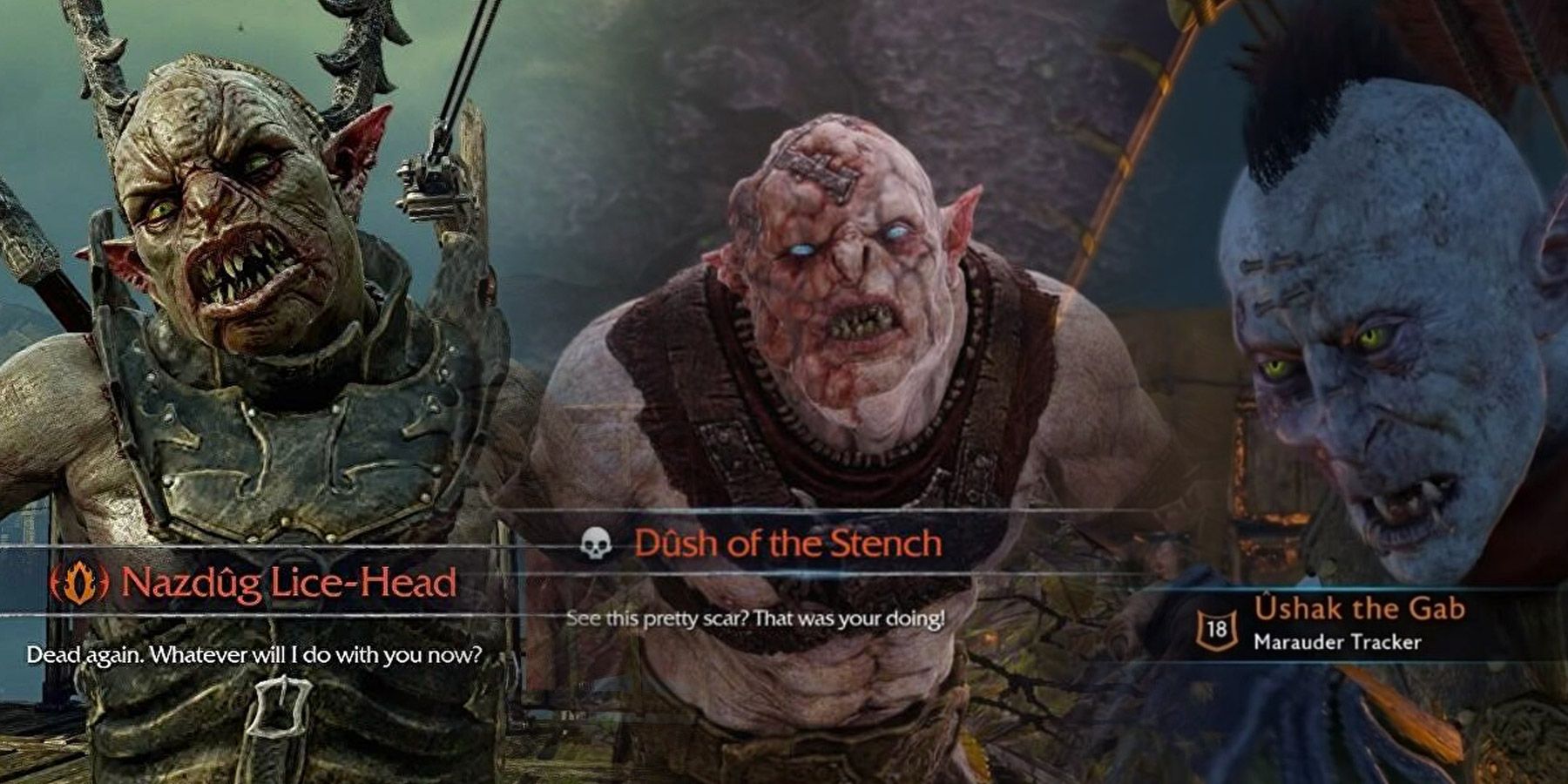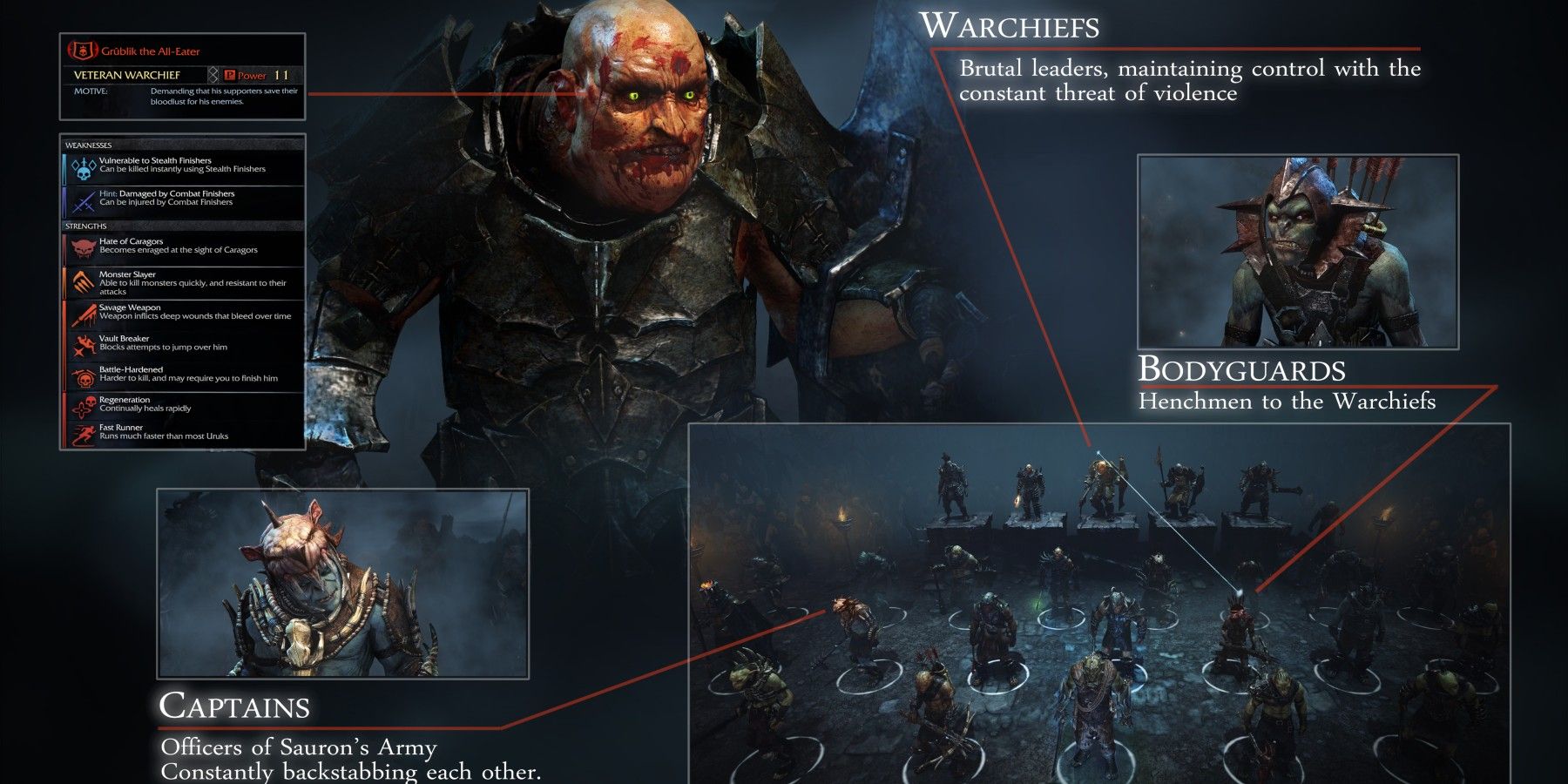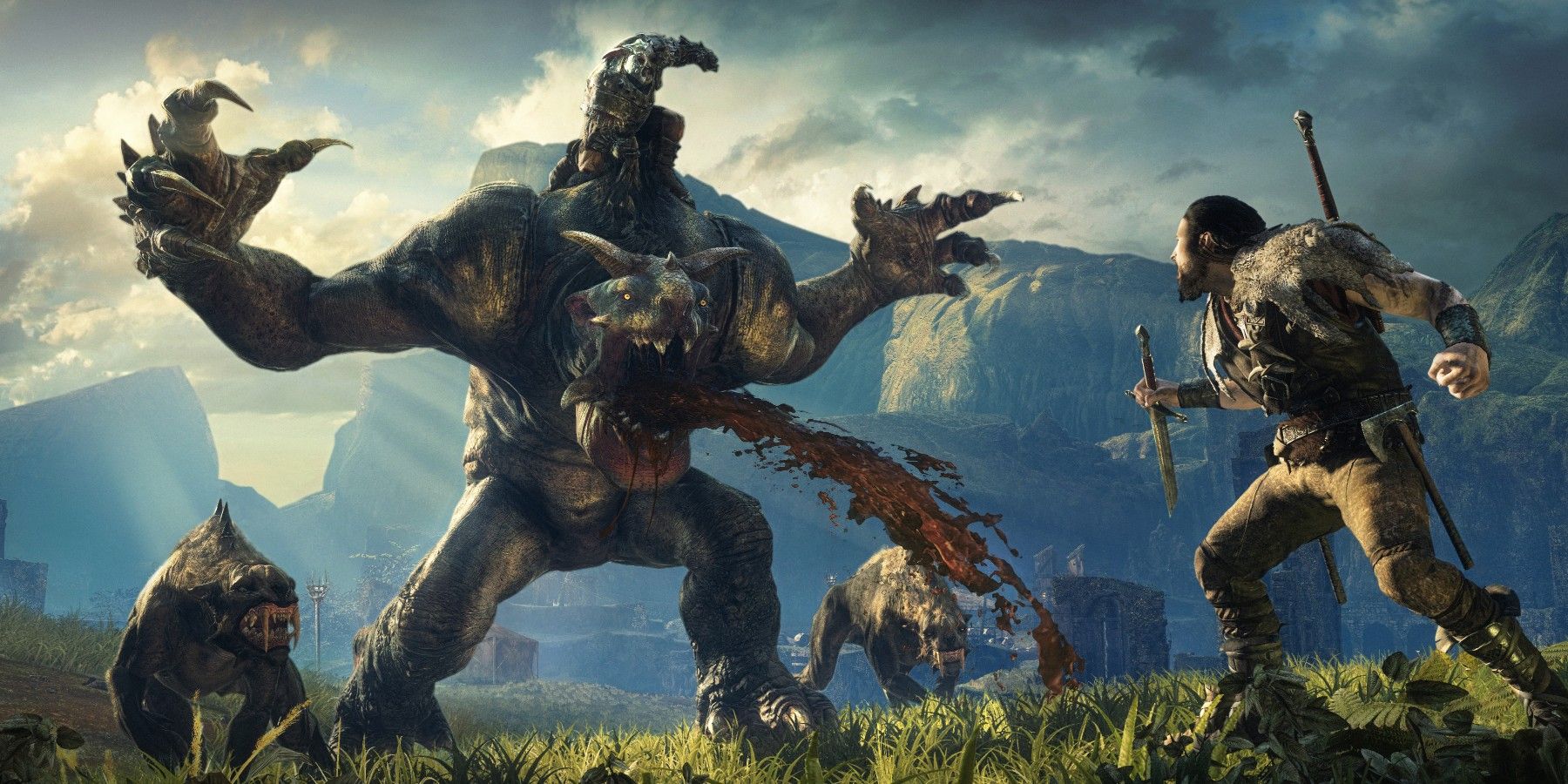In Middle Earth: Shadow of Mordor, character development takes on an entirely new color as the Nemesis System creates layers of depth in the ways in which characters interact with one another in the game. The game's protagonist, Talion, is not the only one that experiences change as the plot progresses as Middle Earth: Shadow of Mordor's Uruk Captains and Warchiefs also change and adapt along the way.
Many video games deliver stories through characters and setting. Tolkien's Middle Earth is a vast landscape full of different areas and races of beings that each have their own distinct traits and characteristics. The Orcs of Mordor are one of these unique races and, unfortunately, the Lord of the Rings books and movies as well as the other games in the franchise don't give much insight into the inner-workings of Orc life. Middle-Earth: Shadow of Mordor delivers this to players, and fans hope that the Amazon Prime series Rings of Power learns a few things from Shadow of Mordor.
Character Development as a Narrative Element
In any given narrative, one of the major elements is that of character and, subsequently, character development. Usually, a good narrative has a variety of dynamic characters, meaning that they change and grow as the story progresses, instead of being stagnant and mundane. For example, just as Game of Thrones is lauded for its characters, the character development in House of the Dragon is considered a weakness as some characters are given attention while others are not.
In video games, however, there are opportunities for substantial character development in different ways. As a unique example, Hades uses art direction for character development, which allows different aspects of game design to come together to create something vibrant and dynamic. But, upon further inspection of this and other examples, two things become clear. First, many games treat character development as simply visual changes, which doesn't cover all aspects of a character. Second, a lot of games focus primarily on the protagonist and how that person changes and grows instead of focusing on the other characters as well. Shadow of Mordor's Nemesis System, however, doesn't have these problems.
Shadow of Mordor’s Nemesis System Explained
Most basically, Middle Earth: Shadow of Mordor's Nemesis System is a villain generator - it takes input from various sources to then output an enemy with certain traits and at a certain position. For example, an Orc that kills Talion moves up in the ranks, maybe becomes a captain, gains a following, becomes stronger, and is therefore more difficult to challenge again later on. In this way, the system populates Mordor with a variety of Uruk that have their own personalities, abilities, and traits.
More than this, however, the Nemesis System creates stories. Each pivot point in the system's branching tree of choices and outcomes creates interesting and compelling narrative moments throughout the game. As Talion goes around Mordor cutting down Orcs and thinning Sauron's ranks, Captains and Warchiefs will learn about him and pieces of dialogue will be generated to reflect the different actions that Talion takes. If he rides a Caragor, the Orcs will mention that. If he uses stealth to take someone down, they will mention that. All of these choices and actions are recorded in a list in the background for Orcs to draw from as the story progresses. This impressive system is praised by many in the video game world and people hope to find the Nemesis System in other games like Wonder Woman.
Shadow of Mordor’s Character Development
Now, as Talion and Celebrimbor traverse Mordor and carry out different quests and missions in order to recover the Wraith's memories and avenge the death of Talion's family, they experience successes, failures, triumphs, loss, and a myriad of other things that cause them to change as the story progresses. This is no different than other RPGs with compelling protagonists, like the main characters in the Assassin's Creed games. However, Shadow of Mordor takes it one step further and gives the same treatment to the game's antagonists.
The Uruk Captains experience triumph and loss as well as they battle Talion, and even each other, during the game. Sometimes, Orcs will skirmish with one another and Talion is able to either intervene or just wait to see the result. The winner will rise in the ranks and the loser will die, allowing Talion to then mark his next target more easily. Of course, the winner of that skirmish will become stronger and might even gain a band of bodyguards that protect him, making it harder for Talion to get to him. Games like Far Cry that have compelling antagonists are great, but those characters are still quite static. The Orcs in Middle Earth: Shadow of Mordor grow and change and adapt to the situation in front of them.
On top of this, the game's sequel, Middle Earth: Shadow of War, takes the system to a completely different level. In this game, the storytelling and character development is enhanced. The narratives that are created from Talion's relationships with the Orcs are highly personal. Talion and recruit Orcs to work for him, and they can come and save him from death. Talion can plant spies in the Uruk ranks, but sometimes, captains discover this and even mention these spies to Talion in different interactions. Recruiting allies in Shadow of War adds even more depth to the game and creates more compelling development in the game's characters.
Good narrative design calls for dynamic characters that play interesting roles in the game's plot. The Orcs in Middle Earth: Shadow of Mordor, thanks to the game's Nemesis System, are compelling, dynamic antagonists that enhance the game's story. Now that the Nemesis System has been patented, players will have to hope that the system finds itself into other games in different ways so that the same level of character development can occur in different game franchises.
Middle-earth: Shadow of Mordor is available now for PC, PlayStation 3, PlayStation 4, Xbox 360, and Xbox One.




